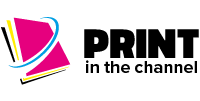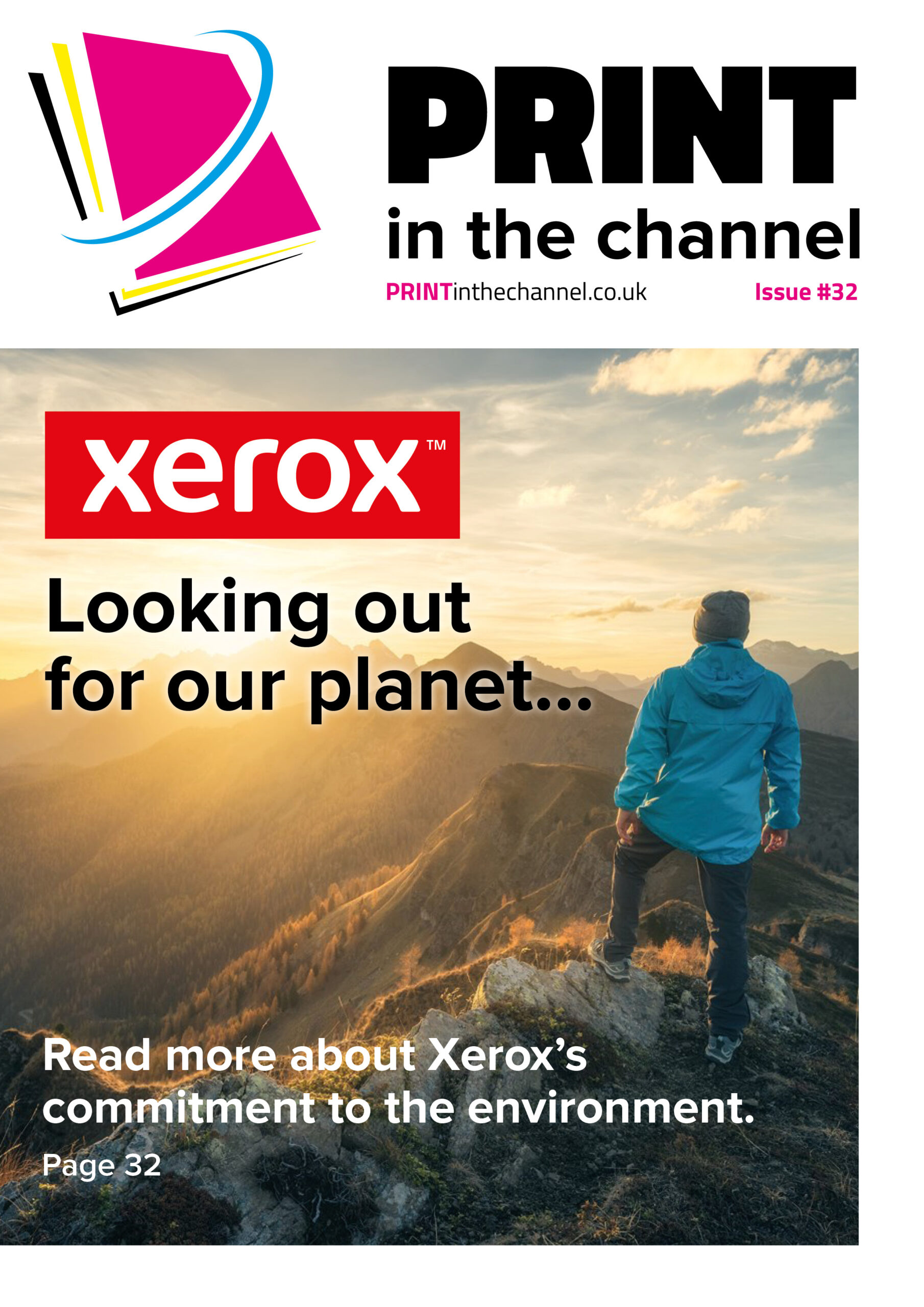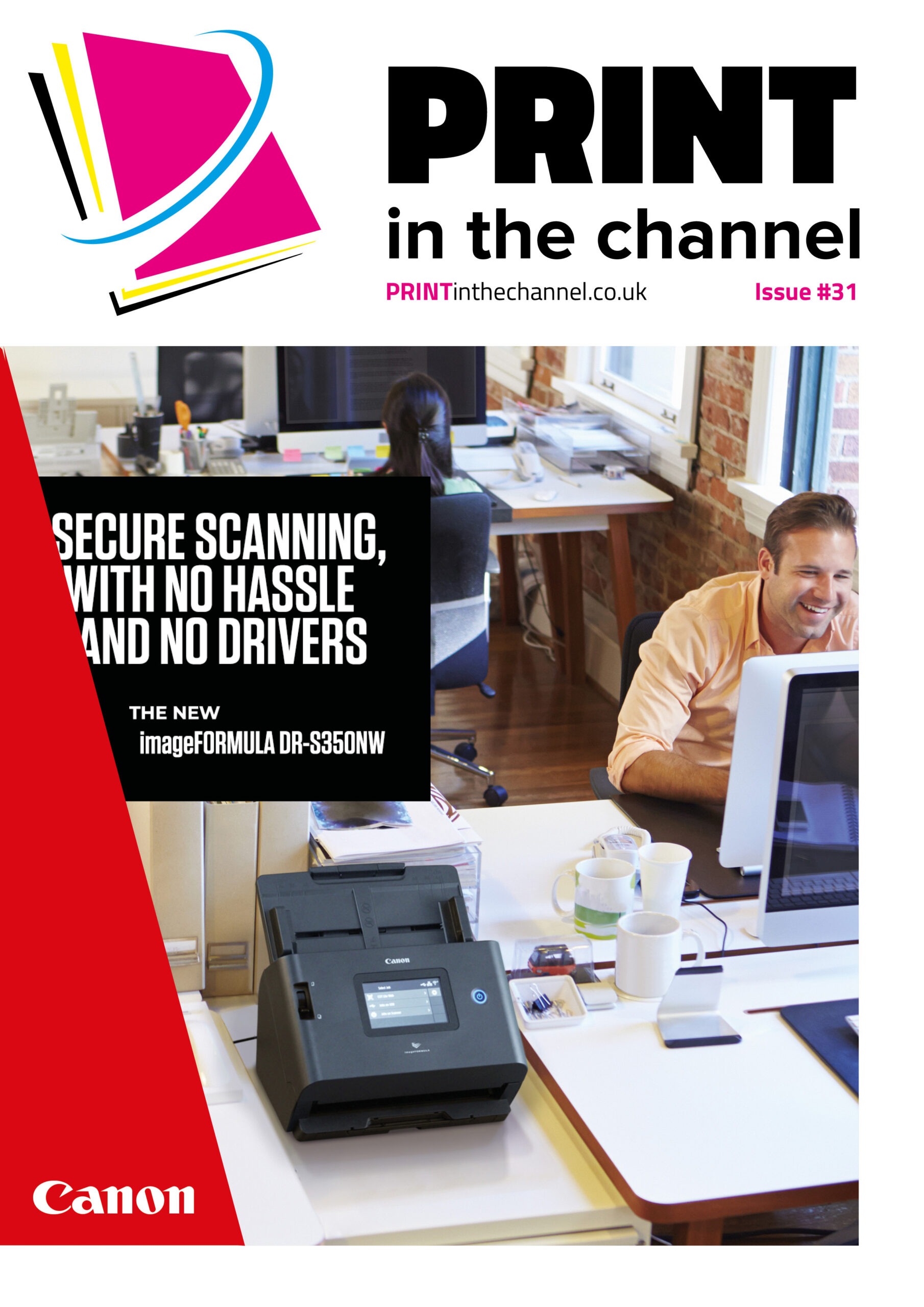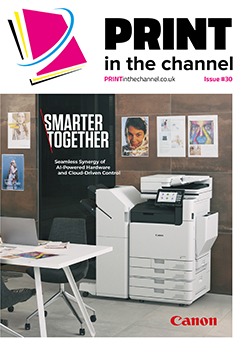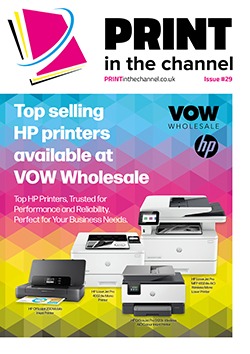Many businesses use in-house teams to create marketing collateral, and large format printers often play a vital role in this. This presents opportunities for resellers, but they must be careful to ensure customers get the right product for their requirements.
Image is vital for the reputation of many businesses and posters, banners and the like are important tools for helping businesses to make the right impression, especially at exhibitions and events.
Increasing numbers of businesses prefer to use their in-house teams to create marketing collateral, and they often use large format printers to create this, which means that demand for them is growing.
“Following on from COVID when the need for marketing materials decreased significantly and as businesses try to cut through digital noise, demand has continued to rise steadily as organisations invest more in promotional and sales materials to support exhibitions, retail promotions and live events,” says Duncan Smith, country director, production at Canon UK & Ireland. “Physical collateral such as signage, posters and displays remains an essential way to engage audiences and create lasting brand impressions.
“One clear trend is that more businesses are choosing to bring production in-house. Having their own large format printer gives marketing teams greater flexibility to create professional-quality materials on demand, cut external costs and safeguard brand consistency. Smaller teams are often drawn to devices such as the Canon imagePROGRAF TC series, while organisations with higher output needs are exploring more advanced systems that can handle complex applications at speed.”
Shaun Holdom, global business development director at Fujifilm, agrees that large format demand is growing. “Although this growth is outside of traditional posters and banner printing, as the new machines and ink technologies can do so much more,” he adds. “This means opportunities are limited only by the creativity and innovation of the print business.”
Shaun says there are many types of equipment on the market today. “All of which do excellent work,” he adds. “We have certainly reached close to the limit of quality every machine can provide near photo quality output, the devices are divided by speed, width and versatility.”
Customer requirements
When businesses are looking for large format printers for use to create marketing collateral, they often have specific requirements.
Shaun says that customers are increasingly looking for hybrid printers. “These machines can print onto rigid and roll materials, offering very wide applications to print shops, meaning they can bring in-house the applications that in the past would have required a number of different devices,” he explains. “With UV ink technology pioneered by Fujifilm, offering the ability to print onto a wide range of materials with excellent durability and immediate drying for instant application.”
Duncan notes that ease of use is a priority. “Particularly for marketing teams without specialist print expertise,” he adds. “Businesses are also looking for printers that fit seamlessly into the wider workflow and are equipped with automation such as guided media loading, allowing users to focus on creativity and delivery rather than technical setup and maintenance.
“Of course, there are a few non-negotiables that remain. High image quality, consistent colour reproduction and reliable performance are essential for protecting brand identity.
“Speed and productivity remain high on the agenda for businesses too. Marketing campaigns move fast, so teams need printers that can turn around high-quality output quickly and adapt collateral in real time to keep pace with business demands.
“Sustainability and cost efficiency are also increasingly shaping decisions, with many organisations looking for printers that optimise ink consumption, minimise waste and reduce energy use, helping them meet environmental targets and budget expectations.”
Trends
The market continues to evolve, and there are distinct trends that have emerged. Duncan says that media versatility has become increasingly important. “Businesses want a single device that can handle diverse applications, from lightweight posters and banners to rigid display boards, decorative graphics or packaging prototypes,” he says.
“This versatility not only helps businesses to respond quickly to changing market demands and tailor output more precisely in line with customer needs but also reach more customers and open new revenue streams. By investing in technology that prioritises versatility and flexibility, businesses can maximise their return on investment and strengthen their position in a competitive marketplace.”
Shaun agrees that a big trend is for printing outside of the traditional posters and banner applications. “More and more customers are printing onto fabrics for soft signage applications and clear films for window graphics,” he says. “Of course, this is a move towards sustainable applications, so the requirements to print onto recyclable materials so more paper and cardboard-based substrates.”
Reseller advice
As mentioned, the market is developing, but if resellers are going to make the most of the opportunities presented by this market, then there are certain qualities they should be talking about to customers about these printers.
Shaun says the key to working with any customer is to understand the printer applications, what problems they have, and the products customers are asking for. “Advise them on the way they can increase opportunity and work in vertical markets with the same printer, not just offering a like-for-like, but understanding the requirements of the customers,” he adds.
“Any reseller now needs to be a consultant and advise based on technology, and how these new pieces of equipment can grow the PSP business and help them future-proof and follow market trends.”
Duncan agrees that expertise is important. “Resellers should be capable of explaining the technology for non-specialist users and how it can streamline the production workflow,” he says. “Features such as automated media handling, intuitive user interfaces, workflow integration and remote monitoring give marketing teams’ confidence that they can produce professional results without technical barriers.
“With quality being at the forefront, they should also be ready to explain the colour management capabilities in detail. For example, automated calibration and Canon’s UVgel technology ensure accurate, consistent output across different substrates, which is vital when protecting brand standards.
“Finally, businesses want reassurance that their teams will not be left to manage new technology alone. Resellers who provide training, responsive support and ongoing advice can position themselves as long-term partners rather than transactional suppliers.”
Future
This is a market that is set for growth for the foreseeable future. “Large format print is set for continued growth as organisations look for more flexible, sustainable and high-impact ways to connect with audiences,” says Duncan. “In the next year, automation and AI will continue to drive smarter job preparation, predictive maintenance and colour management, reduce manual labour and give teams more time to focus on creative campaign work.
“Advances in inks and substrates will also expand the range of sustainable and premium finishes available, helping brands produce distinctive materials that stand out while meeting environmental targets.”
Innovation is key in this market, Shaun agrees. “The trends moving forward will all be around automation, both in hardware and software, as devices get faster and faster, the only way to maximise the speed is with material handling systems, automated cutting and a multitude of finishing devices,” he says.
“In addition, the growth in AI in the print sector will support the software and workflows of all print shops.
“Also, there will be more of a driver around product compliance and certification, so the materials and inks we use need to comply with health and safety requirements around the world. The print shops will need to be educated on the machines, materials and inks they use and how these products impact the health of the employees, the people using the products and the sustainability of our environment.”
